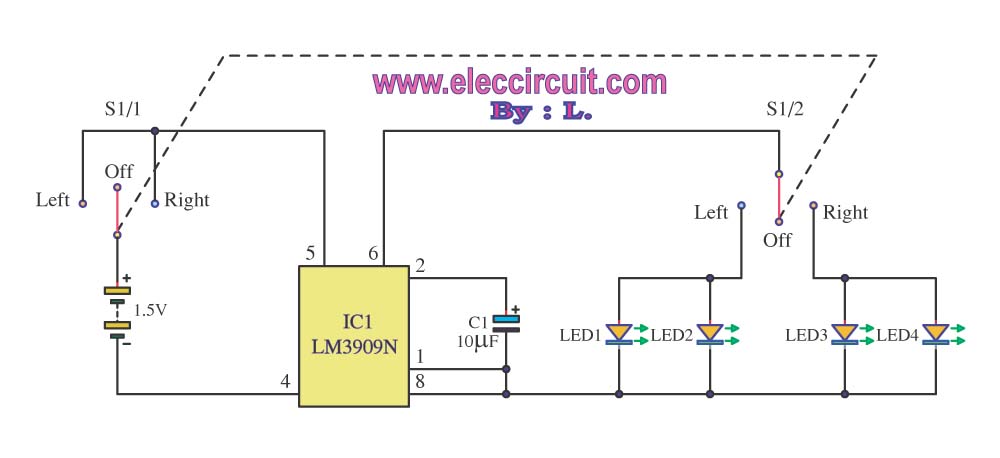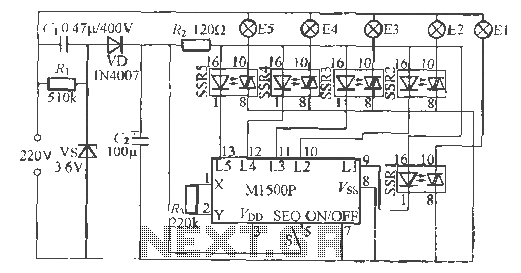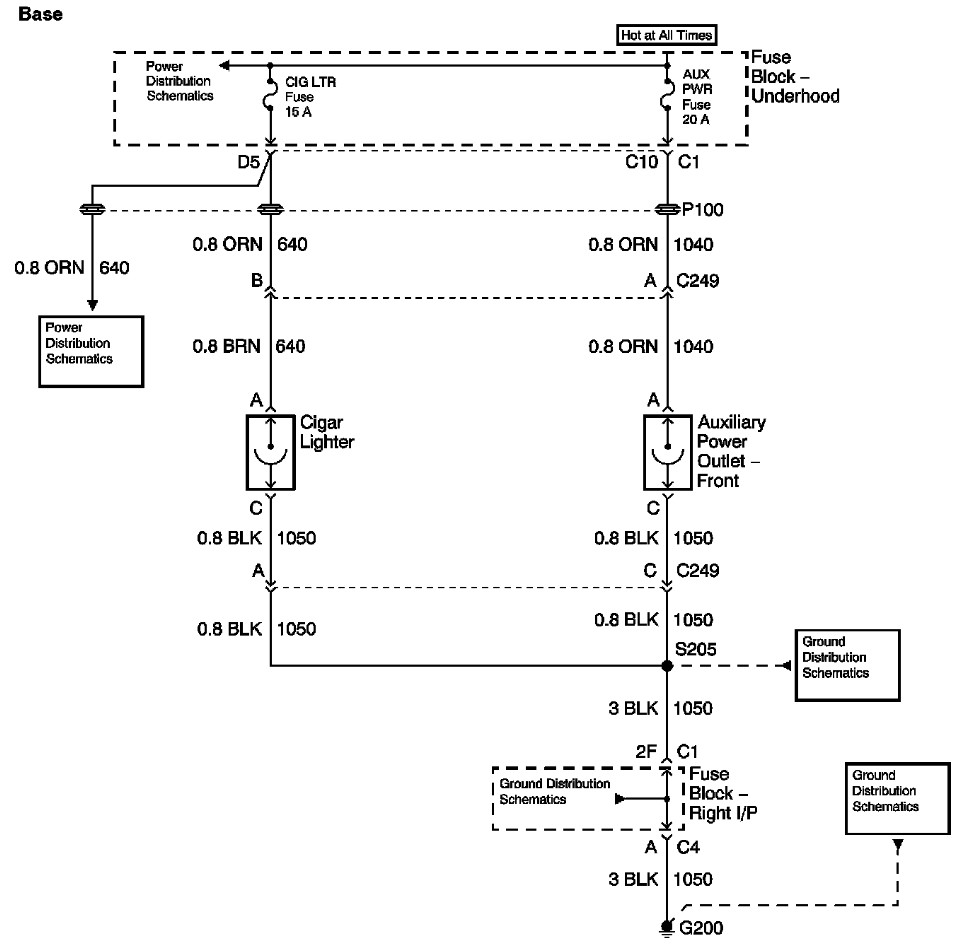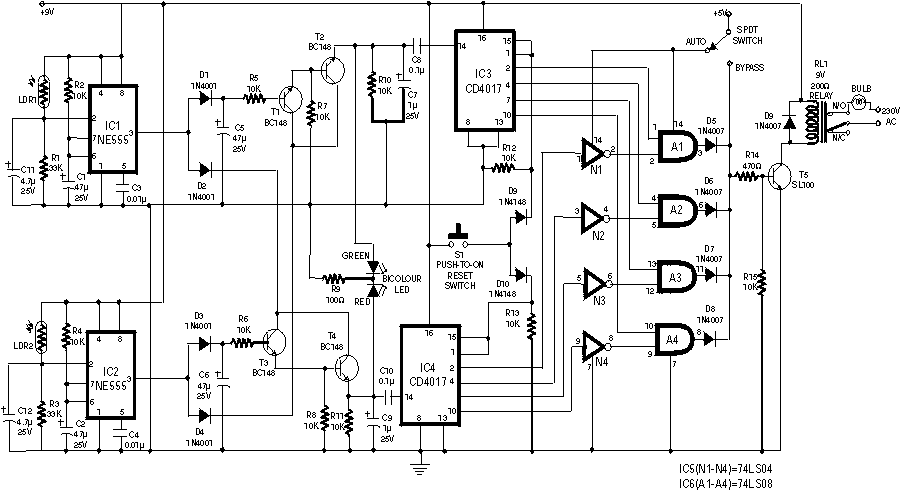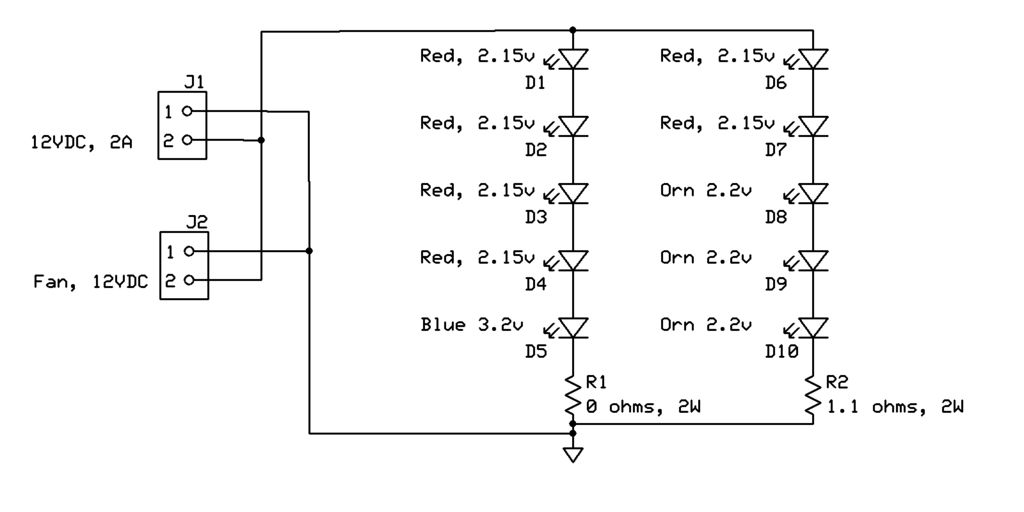
Interior Convenience Light
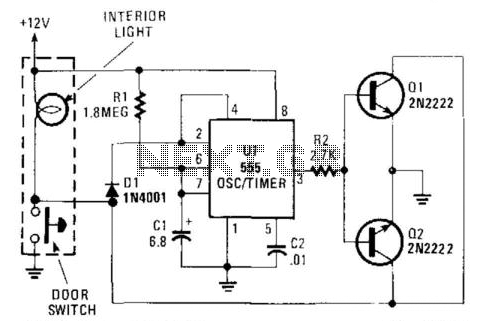
When the door is closed, this circuit maintains the dome light illumination for a duration determined by the values of R1 and C1. The approximate time is given by the equation (1.1)R1 x C1.
The described circuit functions as a timer for the dome light in a vehicle or similar application, ensuring that the light remains illuminated for a specified duration after the door is closed. The timing mechanism relies on a resistor (R1) and a capacitor (C1), which together form an RC time constant. The time duration for which the dome light stays on is approximately calculated using the formula (1.1)R1 x C1, where R1 is the resistance in ohms and C1 is the capacitance in farads.
In practical implementation, when the door is closed, a switch is activated, allowing current to flow through R1 and charging C1. The charging of the capacitor will take time based on the values of R1 and C1. Once the capacitor is fully charged, the voltage across it will reach a threshold that turns off the circuit, thus extinguishing the dome light.
To design this circuit, it is essential to select appropriate values for R1 and C1 to achieve the desired delay. For instance, a larger resistor or capacitor will result in a longer illumination time, while smaller values will shorten the duration. It is also important to consider the maximum voltage rating of the capacitor and the power rating of the resistor to ensure reliable operation.
The circuit can be further enhanced with additional components such as a diode to prevent reverse current flow or a transistor to act as a switch for higher power applications. Proper layout and component selection will ensure that the circuit operates efficiently and meets the intended specifications for the dome light timing function. When the door is closed, this circuit keeps the dome light on for a period determined by Rl/Cl. The time is appr oximately (1.1)R1 x C1.
The described circuit functions as a timer for the dome light in a vehicle or similar application, ensuring that the light remains illuminated for a specified duration after the door is closed. The timing mechanism relies on a resistor (R1) and a capacitor (C1), which together form an RC time constant. The time duration for which the dome light stays on is approximately calculated using the formula (1.1)R1 x C1, where R1 is the resistance in ohms and C1 is the capacitance in farads.
In practical implementation, when the door is closed, a switch is activated, allowing current to flow through R1 and charging C1. The charging of the capacitor will take time based on the values of R1 and C1. Once the capacitor is fully charged, the voltage across it will reach a threshold that turns off the circuit, thus extinguishing the dome light.
To design this circuit, it is essential to select appropriate values for R1 and C1 to achieve the desired delay. For instance, a larger resistor or capacitor will result in a longer illumination time, while smaller values will shorten the duration. It is also important to consider the maximum voltage rating of the capacitor and the power rating of the resistor to ensure reliable operation.
The circuit can be further enhanced with additional components such as a diode to prevent reverse current flow or a transistor to act as a switch for higher power applications. Proper layout and component selection will ensure that the circuit operates efficiently and meets the intended specifications for the dome light timing function. When the door is closed, this circuit keeps the dome light on for a period determined by Rl/Cl. The time is appr oximately (1.1)R1 x C1.
